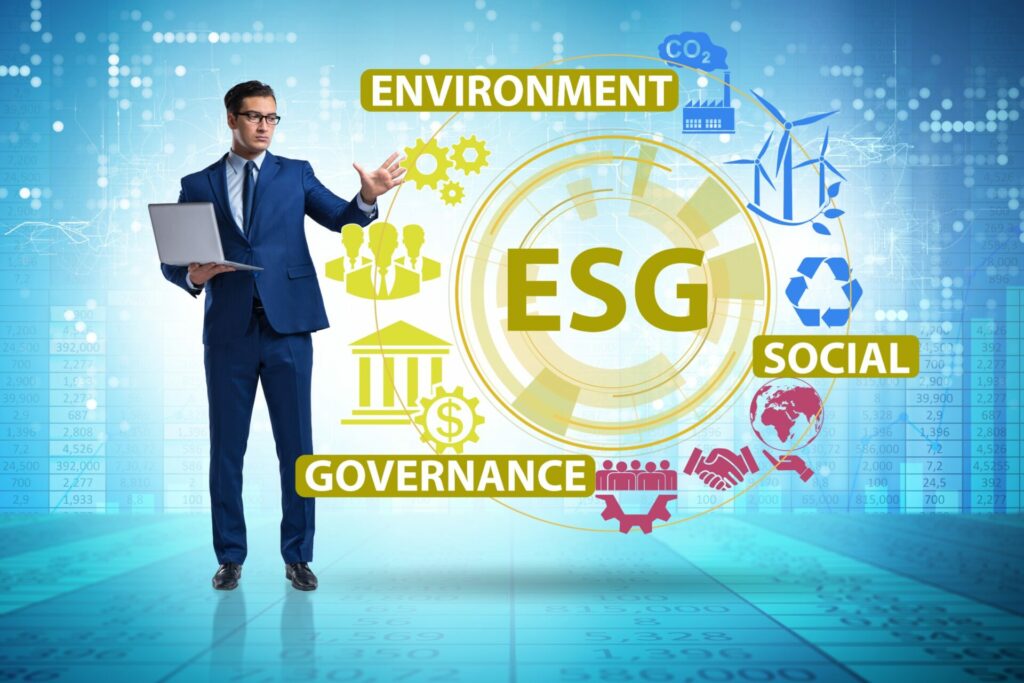
The growing focus on sustainable or green energy has forced Big Oil to adapt and invest in renewable energy businesses. As alternative energy options become increasingly viable, new burdens are being placed on these organizations. Now it is necessary to provide reporting to validate improvement in efficiency and a reduction of carbon emissions. Environmental, Social, and Governance or ESG reporting has emerged as a requirement to fulfill this need. Not only must Oil & Gas organizations abide by this reporting need – but so too must virtually every company that uses public funding. Implementing these reporting capabilities now requires new investment and IT partnerships to achieve this vision.
What is ESG?
Environmental, Social, and Governance (ESG) reflect an organization’s corporate financial interests that focus mainly on sustainable and ethical impacts (source). Companies with higher ESG scores perform better financially. The NYU Stern Center for Sustainable Business validated this alignment, based on a recently completed study – read the full report. This close alignment has impacted how investors value companies and choose to invest.
The term’s origin comes from the investment community. An early reference was in the 2006 United Nations’ Principles for Responsible Investment (PRI) report. Today, it is quite a powerful force. In May 2017, 62% of ExxonMobil shareholders voted for the company to report on its impact on climate change. The results were not good. Its impact on climate change had grown by 38% over the previous year (source). ESG reporting led to shareholders defying management’s request to keep this figure private.
Watch this video to gain further insights:
How Does ESG Reporting Apply to the Oil & Gas Industry?
ESG reporting is now a requirement for nearly every publicly traded company. The score or findings from this reporting impacts access to financial resources. Organizations seeking to grow need capital. A poor or steadily declining score will cut the availability of future funds. Investors now demand social and environmental responsibility across corporate America. This influence extends to the boardroom. With this shift has come the need for better reporting and transparency on what actions are being taken to improve ESG factors.
Governments have begun placing new burdens and regulatory standards to reinforce the same values reflected in ESG reporting. The Biden administration issued a key executive order called “Tackling the Climate Crisis at Home and Abroad” that requires oil & gas companies to incorporate programs, policies, and other activities to help offset the environmental impact of business activities (source).
According to an EPA press release from November 2021, one-third of the warming from greenhouse gases today is due to human-caused emissions of methane, a potent greenhouse gas 30 times more powerful than CO2 in trapping heat in the atmosphere over 100 years. Methane is a primary constituent of natural gas. In the United States, the oil and gas industry is the largest industrial source of methane emissions (source).
New Investment Growth is Driving the Future ESG Reporting
The oil & gas industry is currently navigating through an epic period of change. New environmental business challenges, investor ESG demands, and an extreme labor shortage are having a tremendous impact on upstream, midstream, and downstream operations.
This shift is so significant that the industry has started to hire new subject matter experts from outside the industry. An outside-in perspective will accelerate the pace of innovation. This strategy should be applied to new business processes and strategies. Collaboration from new business partners and digital systems will make this happen. This investment in time, resources, and new digital technologies require new capital. ESG reporting is critical to unlocking these funds.
Current predictions suggest this industry will increase investment in systems, data analytics, Artificial Intelligence, machine learning, and other predictive technologies.
By 2024, Driven by Environmental Goals, 60% of Oil Majors Will Embrace Multisourced Innovation for Sustainability-Focused Solutions, with Digital Platforms Supporting Data and IP Sharing.
IDC FutureScape: Worldwide Oil and Gas 2023 Predictions (source)
Companies operating in the Oil & Gas industry must assess how best to bring on new partners and integrate systems with third-party vendors. This impact will drive change across the entire Oil & Gas value chain. Firms lacking modern systems with remote access, centralized reporting, and standardized APIs to accommodate the sharing of all the new data, IP, and knowledge will face a big challenge.
These organizations will struggle to participate in this next innovation cycle. As breakthroughs occur over the next 18 months, the gap between the firms that invest and those that don’t will widen. Missing out on the benefits resulting from this period of accelerated industry innovation could be considerable.
The next few years will be a very interesting time for organizations operating in the Oil & Gas industry. New leaders will emerge based on IT investments made today. In the end, perhaps the world will be a better place. Our next generation could benefit from greater sustainability, greener energy, and a cleaner environment.
